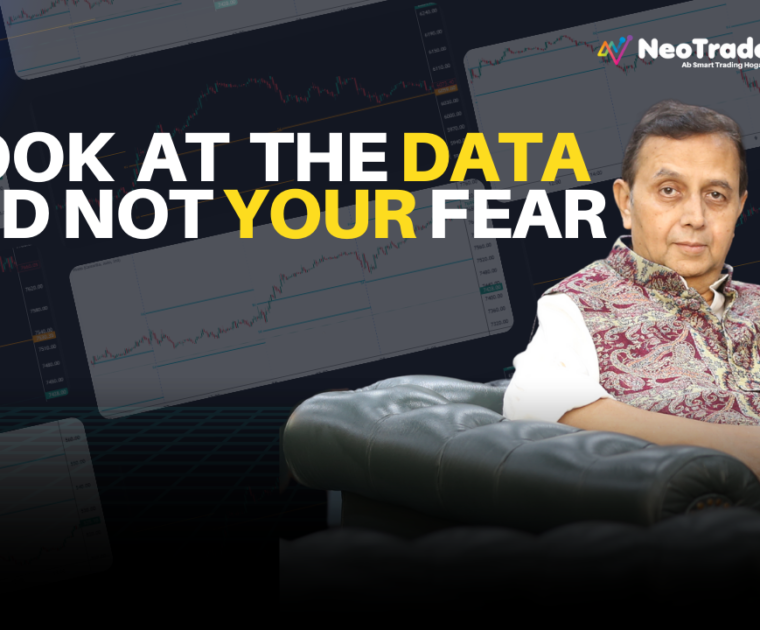Solving the Jigsaw puzzle – Bullish/Bearish

Market is like a giant jigsaw puzzle. It has many, many pieces and we all know most of those pieces but our biggest problem is that we don’t know how they all fit. And that is mainly because, every now and then, those very pieces, undergo changes in shape! The process of analysis is therefore trying, first, to identify the current shape of the pieces and then to fit them together to form a composite. The extent to which we can do this consistently makes us ‘good analysts’.
Thus, market analysis is, really, all about creating the big picture, the context in which everything else is happening. Whatever is likely to happen in the future is dependent a whole lot on what is happening in the present. And what occurs in the present is a lead up from whatever happened in the past. Thus a good analysts job is really to concentrate on gathering the data from the past, digesting that data well by seeing it in the present context and then create the shapes of the jigsaw pieces on the basis of the data massaged in his or her mind to form a composite picture of the future.
Problem is, most people are pretty lazy in gathering data and much prefer looking at the present. For example, looking at the right most portion of the chart to decide on what can happen ahead. I find budding analysts always jumping to the last bar on the chart in order to explain the situation or make a forecast of the future. The last bar or the last set of bars is just one part of the data. It cannot give you the entire picture of the future. To this you have to add the interplay of countless other items- derivative variables, news flow, quarterly results, policy announcements, macro data, order flows, weather…and probably a hundred others. Each of those too are different pieces in what finally becomes the Market.
Now you can see why solving this jigsaw puzzle- analysing the market- is such a difficult job. What do most people then do? They simply skip this step, choosing to take an amorphous view of the situation (bullish/bearish) and dive into create the picture of the stock. That is an easier job, as the number of pieces of this puzzle are a lot more limited compared to the market. However, what is not realized is that the signals produced on the stock chart are all influenced by the context of the market! A bearish signal on a stock chart, for eg., doesn’t work the same effect in a bullish market as it might when the market itself is bearish. We have to understand that the Market is actually the enabler of the signals that appear on the individual stock charts. Our profits and losses depend on the signals on the stock chart but the size of those profits and losses are governed to a great extent by how the market is currently.
 In today’s context, the market trend remaining resolutely bullish for nearly six months now has had a great deal in how much money all of us have made. The same signals on the chart in less robustly bullish times would have given us very different results. As profits begin to grow, we lose sight of the role of the market and start believing in our own abilities to spot the winner. This leads one to a situation where you start believing that you are the one who is really getting it right! This is quite far from the truth. Bull markets gloss over all your errors while bear phases magnify them. Currently, you are feeling like a genius because the market is overlooking all the errors that you are making. When the trend turns, you will know how much of a genius you are. It is painful to find that out, because, in reality, most of us are not the genius we think we have become. Warrant Buffet famously said that it is only when the tide goes out that you find out who is swimming naked. That kind of sums up what I am saying here.
In today’s context, the market trend remaining resolutely bullish for nearly six months now has had a great deal in how much money all of us have made. The same signals on the chart in less robustly bullish times would have given us very different results. As profits begin to grow, we lose sight of the role of the market and start believing in our own abilities to spot the winner. This leads one to a situation where you start believing that you are the one who is really getting it right! This is quite far from the truth. Bull markets gloss over all your errors while bear phases magnify them. Currently, you are feeling like a genius because the market is overlooking all the errors that you are making. When the trend turns, you will know how much of a genius you are. It is painful to find that out, because, in reality, most of us are not the genius we think we have become. Warrant Buffet famously said that it is only when the tide goes out that you find out who is swimming naked. That kind of sums up what I am saying here.
Market is the context in which all stocks are playing out their individual signals. Don’t just concentrate on the signals. Instead, make efforts to create the entire jigsaw puzzle. Once you develop that ability, then even if the pieces change shape every now and then, you will still be able to fit them together as a new picture, because you will now know what the composite picture is! Stephen Covey wrote in his fantastic book Seven Habits, to ‘Begin with the end in sight’. For all market analysts, that is good advice, to be read as ‘Begin with the market picture in sight’.





Leave a Reply
You must be logged in to post a comment.